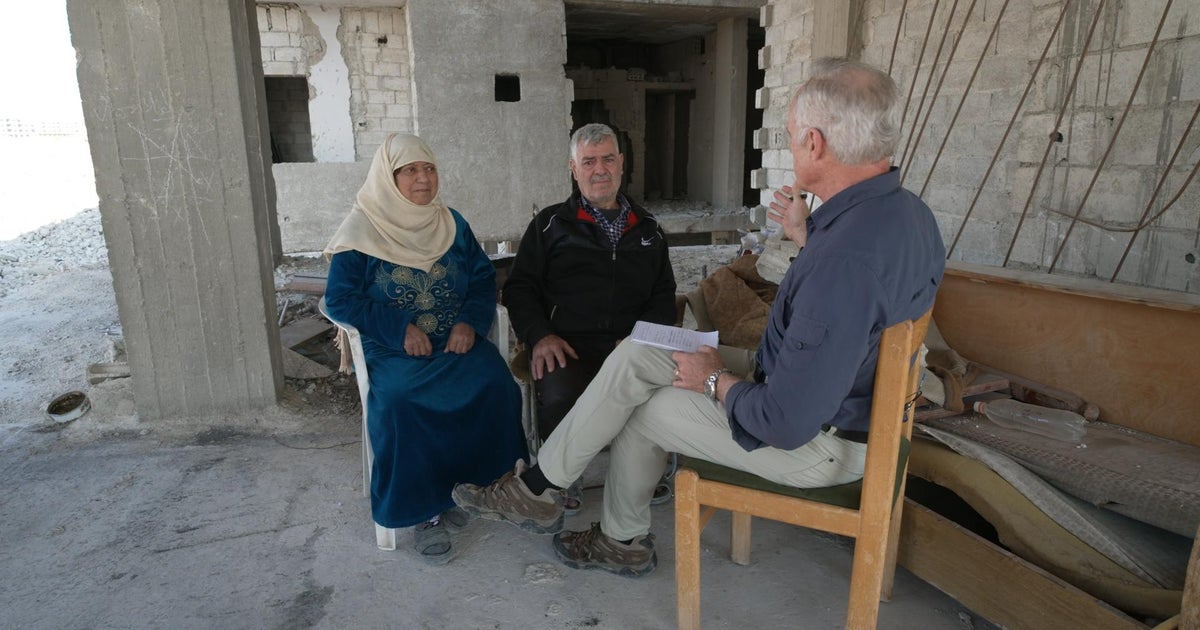How "Sesame Street" created Julia, the new Muppet with autism
Entertaining and educating children on television for almost 50 years, the residents of "Sesame Street" have become household names. There's Big Bird, Abby Cadabby, and Oscar the Grouch. Some, like Elmo, Bert, and Ernie, need only one name.
Now they have a new friend: Julia.
This week on 60 Minutes, correspondent Lesley Stahl visits the set of "Sesame Street" to report on the new Muppet. Julia has appeared in an online initiative since October 2015, and as some viewers may already be aware from these videos, Julia has autism. Now she's joining the gang of "Sesame Street" on television.
On "Sesame Street," creating a new character means making a new Muppet, and in the video embedded in the player above, Stahl visits the Jim Henson Workshop to see how it's done.
What did it take to build a character like Julia?
"Well in this particular case, it takes a lot of sensitivity," Stahl says. She interviewed Rollie Krewson, a puppet designer often referred to as "Elmo's mom," who has been with Jim Henson's company since the 1970s. Krewson created Julia's Muppet with consideration down to the smallest detail.
"Her eyes had to be a certain way because she has to have an intense look, but she has to look friendly," Krewson tells Stahl. "Her hair had to be made so that her bangs weren't in her eyes and that her hair didn't fall into her mouth. And she couldn't have any adornments in her hair—no barrettes, no ribbons."
Her clothes are equally intentional. Her purple dress is loose, without distracting bows, buttons, or ribbons. Even her eyes can change, depending on the scene; Krewson includes a half-closed version and a totally closed version so that if Julia gets upset and overwhelmed, she can close her eyes.
Once built, Julia was ready for the set. Stahl and the 60 Minutes crew were there as "Sesame Street" filmed her first episode.
Watching the puppeteers in action, Stahl was surprised by the way they move around during filming. Holding their puppets high over their heads, the puppeteers wheel around on scooters to navigate the scene. Because their puppets are out of their view, the puppeteers can see which way to manipulate them by watching the scene from a monitor near the floor.
Occasionally two people are needed to operate one Muppet – one for the head and body, and one for the arms. When Julia flaps her arms, for example, a second puppeteer controls them.
But even though they're not on camera, the puppeteers are still performing.
"The puppeteers obviously are actors," Stahl says. "And good actors. They're also comedians. They're so funny. And witty. Even when they're not reading the script, they're improvising."
But Stacey Gordon, the puppeteer who plays Julia, isn't just an actress. She is also a puppet maker and puppeteer by profession — and the mother of a child with autism.
Gordon says she feels so connected to Julia, she felt as though she were meant to play the character.
"I said, 'If there's a puppet, I want to be her,'" Gordon tells Stahl in the video above of when she saw Julia as an animation. "[I thought] it's so far out there, it's never going to happen. It's never going to happen."
Now that it is happening on "Sesame Street," Gordon knows first-hand the impact Julia will have on children who can identify with her.
"As the parent of a child with autism, I wished that it had come out years before, when my own child was at the "Sesame Street" age," Gordon says.
When animating Julia, Gordon draws on her own experience, a factor that Stahl says lends authenticity to the character.
"The public will understand that behind Julia, who, by the way, flaps and throws a fit when the noise gets too loud, that this mother who is manipulating the puppet knows that this is what happens," Stahl says.
Julia's puppeteer isn't the only one on the project who has real-life experience with autism. The "Sesame Street" team worked closely with autism organizations, educators, and families to decide how best to portray a child with autism, including how to explain autism at a pre-school level.
Like lots of kids on the autism spectrum, Julia has heightened sensitivity to noise, so when she hears sirens, they overwhelm her, triggering a meltdown.
"We're going to tell you more about what that means, and why she's acting this way," Rosemarie Truglio, Senior Vice President for Curriculum and Content at Sesame Workshop, says in the video above. "Give children that information. She's acting this way because she's on the autism spectrum."
"But then, you can still be friends."
The special "Sesame Street" episode "Meet Julia" originally aired in April on HBO and PBS KIDS. Since then, "Sesame Street" has filmed a new episode featuring Julia that will be part of the show's upcoming season.
Sesame Street® video courtesy of Sesame Workshop ©2017
The videos above were originally published on March 19, 2017 and produced Ann Silvio and Lisa Orlando, and edited by Lisa Orlando and Sarah Shafer Prediger.









